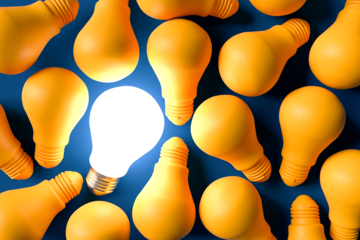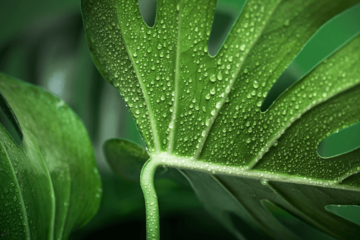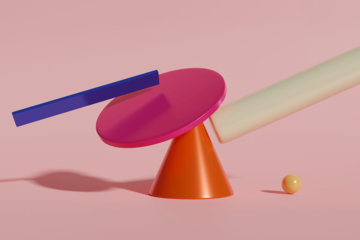Browse
Culture And Society
https://aap-qa.apps.venturit.org/Opportunities/Opportunity_details/data-science
By:
rupali
Tuesday, Oct 5, 2021
CULTURE AND SOCIETY
+1
No Preview Available
Leave a comment
Technology integration is the use of technology tools in general content areas in education in order to allow students to apply computer and technology skills to learning and problem-solving. Generally speaking, the curriculum drives the use of technology and not vice versa.
By:
rupali
Monday, Sep 27, 2021
CULTURE AND SOCIETY
+2

Leave a comment
Organic farming is an agricultural system that uses fertilizers of organic origin such as compost manure, green manure, and bone meal and places emphasis on techniques such as crop rotation and companion planting. It originated early in the 20th century in reaction to rapidly changing farming practices. Certified organic agriculture accounts for 70 million hectares globally, with over half of that total in Australia. Organic farming continues to be developed by various organizations today.
By:
rupali
Monday, Sep 20, 2021
AGRI-FOOD SYSTEMS
+3

Leave a comment
Data science
Data science is an interdisciplinary field that uses scientific methods, processes, algorithms and systems to extract knowledge and insights from noisy, structured and unstructured data, and apply knowledge and actionable insights from data across a broad range of application domains. Data science is related to data mining, machine learning and big data.
By:
rupali
Thursday, Dec 16, 2021
AGRI-FOOD SYSTEMS
+5
AGRI-FOOD SYSTEMS
+3
Wednesday, Aug 18, 2021
Leave a comment
Agriculture is the art and science of cultivating the soil, growing crops and raising livestock. It includes the preparation of plant and animal products for people to use and their distribution to markets. Agriculture provides most of the world's food and fabrics.
By:
tajsvini rajesh kamthe
Wednesday, Aug 18, 2021
CULTURE AND SOCIETY
Leave a comment
Neutron capture
It is believed that these heavier elements, and some isotopes of lighter elements, have been produced by successive capture of neutrons. Two processes of neutron capture may be distinguished: the r -process, rapid neutron capture; and the s -process, slow neutron capture. If neutrons are added to a stable nucleus, it is not long before the product nucleus becomes unstable and the neutron is converted into a proton. Outside a nucleus, a neutron decays into a proton and an electron by a process called beta decay (β-decay). Inside a nucleus it can be stable if the nucleus does not contain too many neutrons. In slow neutron capture, neutrons are added at a rate such that whenever an unstable nucleus is formed, it beta-decays before another neutron can be added. If neutrons can be added more rapidly, as in the r -process, the unstable nuclei formed cannot decay before additional neutrons are added until a nucleus is eventually produced that will not accept a further neutron. This nucleus, however, will eventually be subject to beta decay, thus permitting further neutron capture.
By:
rupali
Tuesday, Aug 10, 2021
AGRI-FOOD SYSTEMS
+3
Leave a comment
Atomic model
Most matter consists of an agglomeration of molecules, which can be separated relatively easily. Molecules, in turn, are composed of atoms joined by chemical bonds that are more difficult to break. Each individual atom consists of smaller particles—namely, electrons and nuclei. These particles are electrically charged, and the electric forces on the charge are responsible for holding the atom together. Attempts to separate these smaller constituent particles require ever-increasing amounts of energy and result in the creation of new subatomic particles, many of which are charged.
As noted in the introduction to this article, an atom consists largely of empty space. The nucleus is the positively charged centre of an atom and contains most of its mass. It is composed of protons, which have a positive charge, and neutrons, which have no charge. Protons, neutrons, and the electrons surrounding them are long-lived particles present in all ordinary, naturally occurring atoms. Other subatomic particles may be found in association with these three types of particles. They can be created only with the addition of enormous amounts of energy, however, and are very short-lived.
By:
rupali
Wednesday, Jul 28, 2021
CULTURE AND SOCIETY
+1

Leave a comment
https://aap-qa.apps.venturit.org/pathway/chemical-element-atom
By:
rupali
Friday, Jul 23, 2021
CULTURE AND SOCIETY
No Preview Available
Leave a comment
Solar System
The Solar System is the gravitationally bound system of the Sun and the objects that orbit it, either directly or indirectly. Of the objects that orbit the Sun directly, the largest are the eight planets, with the remainder being smaller objects, the dwarf planets and small Solar System bodies. Of the objects that orbit the Sun indirectly—the natural satellites—two are larger than the smallest planet, Mercury.
One of Billions. Our solar system is made up of a star, eight planets and countless smaller bodies …
Meet Me in the Orion Arm. Our solar system orbits the center of the Milky Way Galaxy at about …
A Long Way Round. It takes our solar system about 230 million years to complete one orbit around …
Spiraling Through Space. There are three general kinds of galaxies: elliptical, spiral and irregular.
By:
rupali
Friday, Jul 23, 2021
CULTURE AND SOCIETY
+1
Leave a comment
https://aap-qa.apps.venturit.org/playlist/nucleotide
By:
rupali
Friday, Jul 23, 2021
CULTURE AND SOCIETY
No Preview Available

Leave a comment